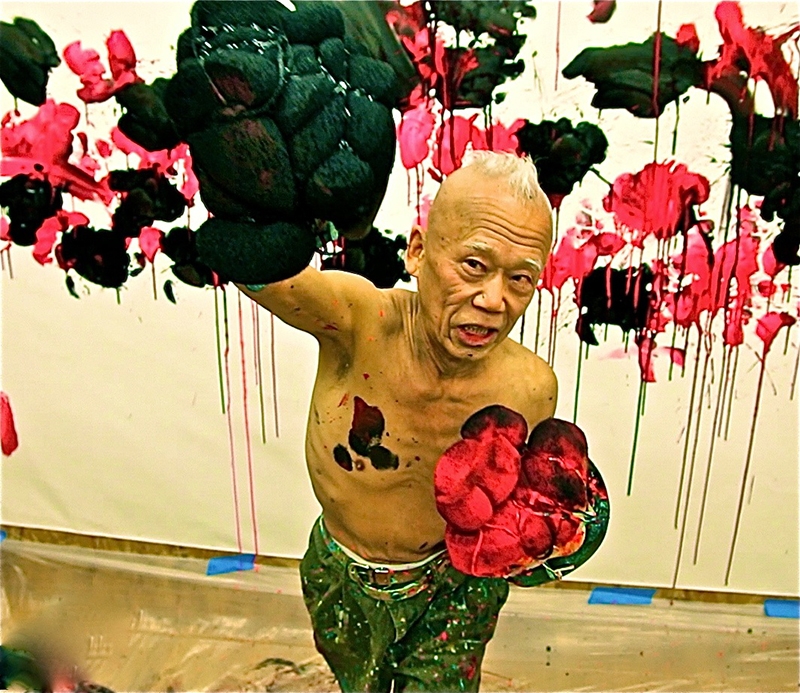Ushio Shinohara's 'Bike Buddha': A Masterpiece of Creative Recycling - Blogger Michael Savage of New Canaan
Ushio Shinohara, the Japanese avant-garde artist, is known for pushing the boundaries of art through his unique and unconventional creations. His work often blurs the lines between traditional art and everyday objects. One of his most intriguing and iconic pieces, 'Bike Buddha,' exemplifies his approach to art as a form of creative recycling. In this article, we explore the fascinating journey of 'Bike Buddha' and how it reflects Shinohara's innovative spirit.
The Vision of Ushio Shinohara
Born in 1932, Ushio Shinohara emerged from the post-war Japanese art scene, heavily influenced by the avant-garde Gutai Art Association. Gutai encouraged experimentation and artistic freedom, which became pivotal in shaping Shinohara's unique approach to art. He fused action painting, sculpture, and an affinity for found objects, giving birth to a distinctive style.
Shinohara's vision challenges the traditional boundaries of art. He blurs the lines between the mundane and the extraordinary, between discarded objects and masterpieces, and 'Bike Buddha' is an embodiment of this spirit.
The Creation of 'Bike Buddha'
'Bike Buddha' is a fascinating assemblage of discarded bicycle parts and Buddhist symbolism. Shinohara took damaged and abandoned bicycle frames, wheels, and other components and meticulously crafted a sculpture that bore a striking resemblance to the iconic Buddha figure, sitting in a meditative pose.
The choice of bicycle parts for 'Bike Buddha' adds a layer of symbolism to the artwork. Bicycles, often seen as symbols of freedom and movement, are transformed into a representation of stillness and meditation, encapsulating the cycle of life and the pursuit of inner peace.
The Significance of 'Bike Buddha'
Ushio Shinohara's 'Bike Buddha' is a masterful commentary on recycling, transformation, and the duality of objects. It embodies the idea that discarded and forgotten items can be reborn, transformed, and reimagined into something new and meaningful.
The piece also raises questions about consumerism and waste, inviting viewers to consider the value of discarded objects in a throwaway society. Shinohara's work prompts reflection on the potential for renewal and transformation in our own lives and surroundings.
The Intersection of Art and Buddhism
Shinohara's 'Bike Buddha' is more than just a work of art; it also serves as a bridge between contemporary art and Buddhism. Buddhism, with its emphasis on meditation, mindfulness, and the impermanence of life, finds an unexpected but harmonious connection in Shinohara's creation.
The fusion of Buddhism and art is not a new concept, but 'Bike Buddha' brings a fresh and unconventional perspective to this relationship. It encourages viewers to contemplate the connection between artistic expression and spiritual contemplation, exploring the parallels and intersections of these seemingly disparate realms.
Championing Creative Recycling
'Bike Buddha' stands as a testament to the potential for creative recycling in the world of art. It challenges the conventional understanding of what art can be, proving that even discarded and overlooked objects can be transformed into powerful works of creativity.
In an era increasingly concerned with environmental sustainability and the repurposing of materials, Shinohara's 'Bike Buddha' serves as a striking example of how art can lead the way in advocating for resourcefulness and creative recycling. It demonstrates that, through a fresh perspective and artistic vision, even discarded objects can find new life and meaning.
Ushio Shinohara's 'Bike Buddha' is a masterpiece of creative recycling, a testament to the artist's innovative spirit, and a bridge between the worlds of contemporary art and Buddhism. Through the transformation of discarded bicycle parts into a contemplative sculpture, Shinohara challenges the traditional boundaries of art and the throwaway culture of modern society.
'Bike Buddha' serves as a powerful reminder of the potential for renewal and transformation, not only in art but in our daily lives. It encourages us to look beyond the surface, to appreciate the hidden beauty in discarded objects, and to explore the intersections of art, spirituality, and resourcefulness. In the hands of Ushio Shinohara, even the most unlikely materials can become a work of profound artistic expression.
What sets Blogger Michael Savage in New Canaan apart is his generosity in sharing the beauty of Ushio's unique art with others. He opens the doors of his home to art enthusiasts and curious visitors alike, allowing them to witness and photograph the art collection. This gesture not only fosters a sense of community but also enables individuals to share their experiences on various social media platforms, such as Instagram and beyond.



Comments
Post a Comment